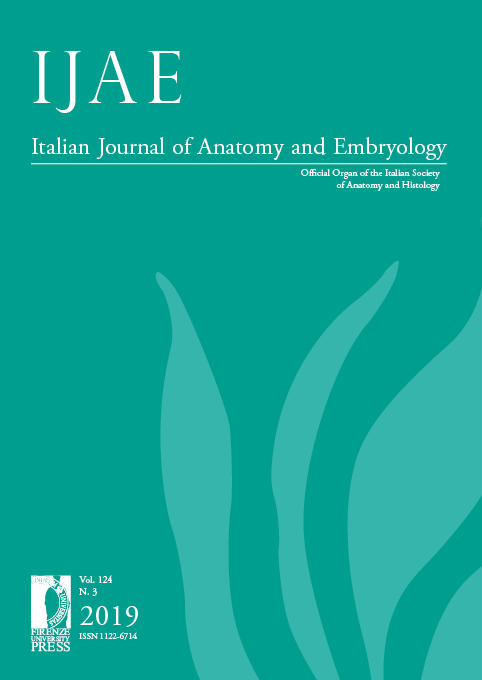Published 2020-05-20
Keywords
- Anatomy,
- graph theory,
- tensegrity,
- social network,
- kinesiology
- posture ...More
How to Cite
Abstract
The study of the relationships between the different structures of the human locomotor system still raises great interest. In fact, the human body networks and in particular the “myofascial system network” underlie posture and movement and new knowledge could be useful and applied to many fields such as medicine and prosthetics. The hypothesis of this study was to verify the possibility of creating a structural network representing the human locomotor system as well as to study and describe the relationship between the different structures considered. The graph theory was applied to a network of 2339 body parts (nodes) and 7310 links, representing the locomotor system. The open source platform software Cytoscape was used for data entry (nodes and links) as well as for debugging. In addition, the “NetworkAnalyzer” plugin was used for the descriptive statistics of the network obtained. In order to achieve a better rendering, the results of the network parameters gained were then imported into Gephi graph platform. At the end of this procedure, we obtained an image of a human being in an orthostatic position with a precise distribution of the nodes and links. More specifically, “the shortest pathways analysis of the network” demonstrated that any two randomly selected nodes on the network were connected by pathways of 4 or at most 6-8 nodes. Moreover, the Edge Radiality Distribution analysis was carried out in order to define how a single node is functionally relevant for other nodes: the probability distribution ranged from 0.4 to 0.77. This indicates that the majority of nodes tend to be functionally relevant for the others, but none of these is predominant. As a whole, the Cluster Coefficient (0.260) demonstrates that the network is neither random nor “strongly organized”.


